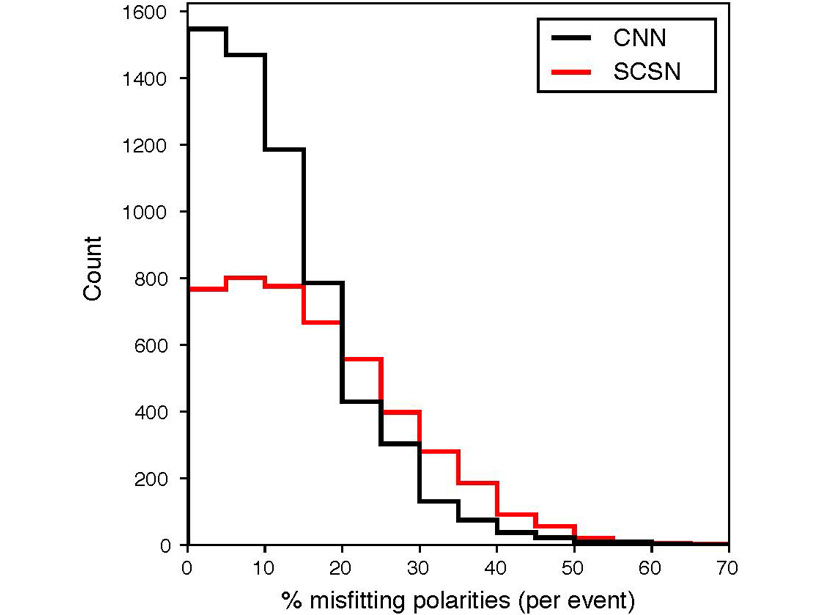Source: Journal of Geophysical Research: Solid Earth
It is laborious and time consuming to determine arrival times and polarities for large seismic network data, but that data is necessary to determine the earthquake locations and orientations of the fault planes, which can impact on the energy propagation. Ross et al. [2018] show that by training a computer using deep learning methods, it is possible to accomplish these tasks automatically and accurately. Getting better results from a machine than people will allow seismic networks to determine much better locations and focal mechanisms, which can be used for detailed studies of faulting and stress. Many seismic networks have become automated, but those networks often have their location qualities suffer and the resulting automatic catalogues become worse for seismic research than the previous, manual ones, were. This technique could potentially revolutionize network seismology by making research quality data available much more quickly.
Citation: Ross, Z. E., Meier, M.‐A., & Hauksson, E. [2018]. P wave arrival picking and first‐motion polarity determination with deep learning. Journal of Geophysical Research: Solid Earth, 123. https://doi.org/10.1029/2017JB015251
—Martha K. Savage, Editor, JGR: Solid Earth
Text © 2018. The authors. CC BY-NC-ND 3.0
Except where otherwise noted, images are subject to copyright. Any reuse without express permission from the copyright owner is prohibited.

